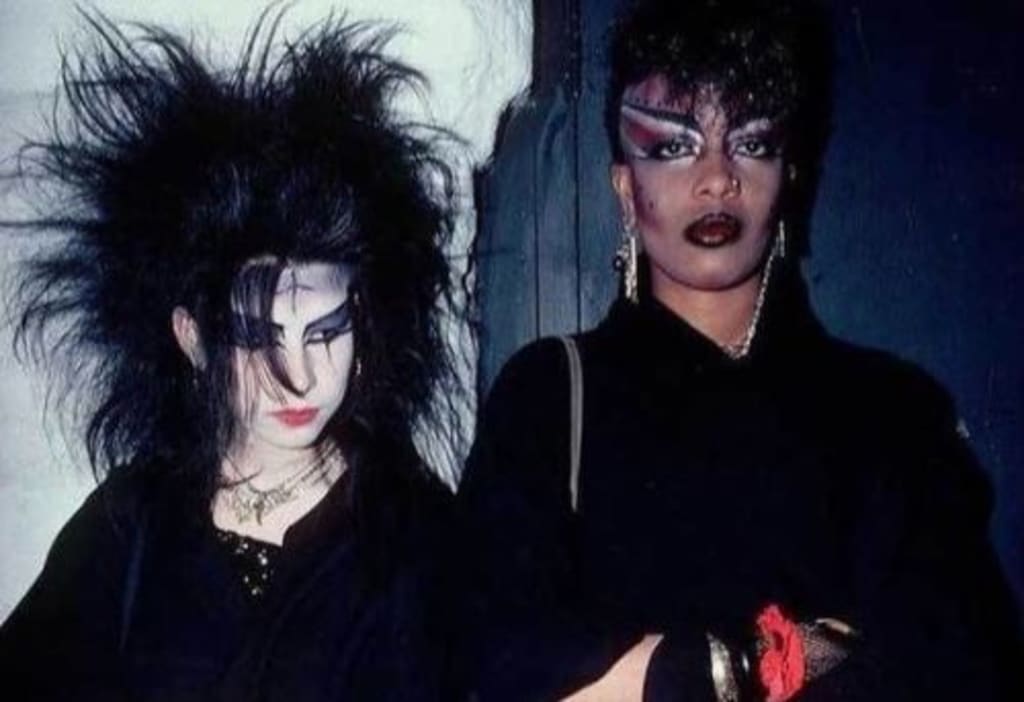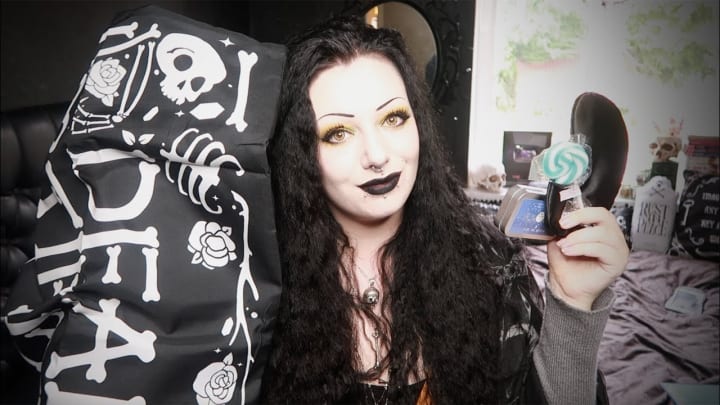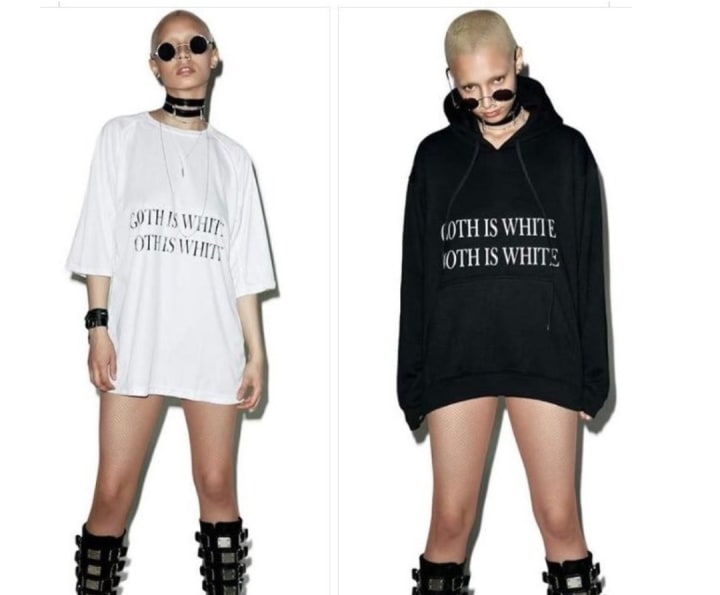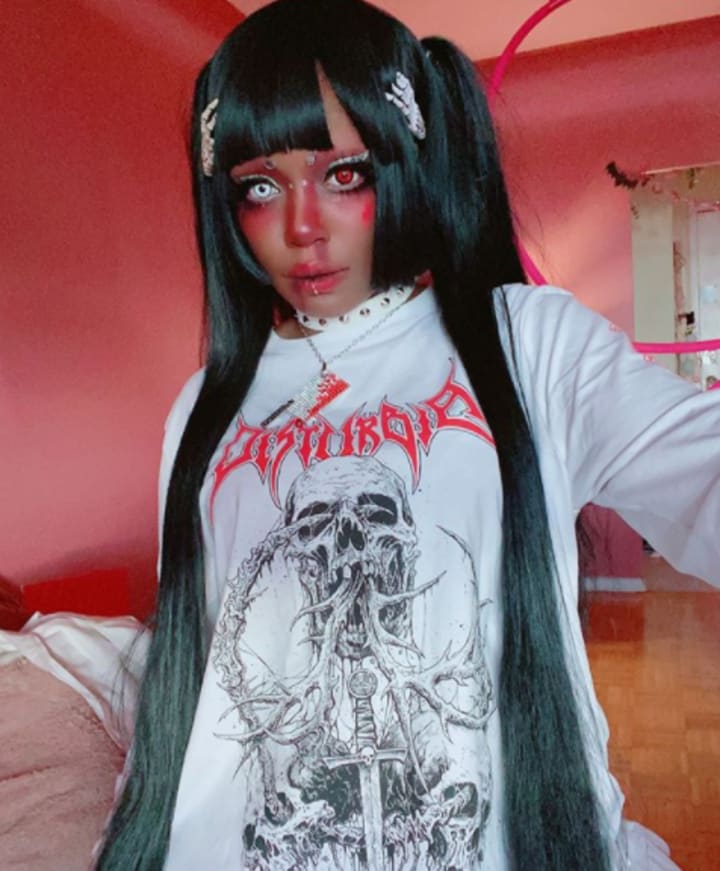'Goth is White': Racism in the Gothic Subculture
It is strange and sad to think that a cultural group emerging to facilitate the alternative interests of its members suffers much the same prejudices as the rest of society. But it is true. This article explores the racial biases implicit in the gothic community and how we can identify, rectify and learn from them.

Goth culture has been, since its birth in the late 1970's, a form of rebellion. This can only be expected from the offshoot lovechild of the punk scene. To be 'goth' is considered bizarre, unusual, alternative. Goths, since the dawn of their creation, have garnered strange looks from people on the street due to their wild hair, dark clothes and often extravagant accessories.
It seems strange to even talk about, then, the possibility of inequality and discrimination existing within a subculture that not only exists primarily for the like-minded alternative attitude of its members, but also possesses a variety of its own widespread microcosmic groups. From the contraversial 'Lolita' goth movement to the neon-infused cyber goth scene, the sleek '40's looks of the pin-up goths and even the original 'batcave' goth, to which I most strongly identify, goth culture is awash with variety. Yet, why are we talking about the issues of race in conjunction with being goth?
To understand the internal fractures in the community, one must first understand what it is to be goth. When I asked, I always tell people that being goth is not being morbid, forlorn or drinking red wine in cemeteries. Those things can coincide with being a goth, sure, but at its core, goth is feeling an affinity with the things that society perceives to be strange and unusual. Championing the colour black, despite its connotations with death and morbidity; finding beauty in the sorrowful, joy in the macabre and an irresistible attraction to the dark, strange and sometimes twisted. This is not to say that goths are unhinged, depressed and inconsolably morose. Having an interest in the strange and unusual and dressing in all-black despite thirty degree weather does not make one, shockingly, insane. I can vouch for this (I think). Being goth is merely possessing a keen interest in the things that others might find scary or morbid, such as vampires, skeletons and bats. Many a goth can be just as bright and bubbly as the next person; it's all down to personal taste.
Being goth is also directly linked to the music that inspired and continues to inspire the subculture. This seems to be forgotten a lot nowadays when the topic of 'being goth' is discussed. The music that underpins the narrative of the goth subculture is often mislaid for discussion of pale make-up, black clothes and the fascination with death, when these are merely by-products in truth. And, naturally, this is not to say that if your Spotify playlist doesn't only consist of Joy Division, Sisters of Mercy and Sonic Youth then you're nothing but a poser, but traditionally the music is and has always been intrinsic to the formulation and development of the scene.
You might be thinking I've forgotten something - what about the white face? The trademark deathly pale look with the bold eye make-up and stark black lip? Yes, the pallid goth look is often adopted by members of the community on a regular basis. Take two goths I watch on a regular basis: ToxicTears and ItsBlackFriday. They are two popular goth YouTube channels who constantly rock the pale as death skin with eyeliner wings larger than my bank balance. But smothering yourself in clown-white foundation every day and sticking in red contact lenses, while often serving to create a breathtaking look for those who choose it, does not a goth make. Indeed, for the two YouTubers I mentioned, looking goth is a small only part of their expression of being a goth, and this does not have to be the same for everyone. Their interests and contributions to the goth community, which you can explore on their channels, surpass their looks in importance.
The look, despite common misconceptions, has never been an integral part of the movement like its music or its fashion. It is more of a preference. Yet with the pale lipstick-smeared face of The Cure's Robert Smith being everyone's single mainstream reference point for gothic origins, only to be reinforced by the contact-lense wearing ghoul Marilyn Manson in the '90s, it's no surprise that some people have taken this as one of the goth community's trademarks.

Herein people are forgetting the nature of what it means to be within the goth community. People forget that icons of gothic music such as Bauhaus and industrial punk group Killing Joke didn't paint their faces deathly white on all occasions. Peter Murphy's gaunt, pallid complexion may have been natural, but Bauhaus managed to capture the essence of what it means to be a 'goth' without setting boundaries with overtly wild looks of emanating death-chic. Even Siouxsie Soux, often considered to be one of the founders of the gothic movement, did little more than apply sharp eye-liner and a red lip to achieve her alternative look. Being pale or explicitly white was never a prescribed requirement to be within the scene. It was all about the feeling, fashion and music. Never about skin type. The very notion is ludicrous.
But, as one might guess from the rather despairing title and overtone of this article, some members of the community have forgotten what it is to be goth to such an extreme, that they have decided to exclude members based on race. As frustrating as it is, some members of the goth community have allowed the modern associations of what it is to be a 'goth' to feed into their own perceptions of what a goth should be. This, rather frustratingly, includes the ashen white face.
Microaggressions directed towards POC and BIPOC members of the goth community are, sadly, everywhere. Outwardly, to the viewer's naked eye, they may not seem obvious, but they are wholly implicit in the marketing of goth brands. This is especially damaging since it creates a picture of white exclusivity from the outside-in, making people feel as though they are not wanted by a group with which they strong identify. The importance of community is as crucial as it has ever been, and discovering like-minded people who understand where you're coming from without immediately boxing you off as a 'weirdo' for shying away from the sun and liking odd things, is a rare joy. The way goth brands are outwardly portraying, even in 2020, a highly unrepresentative picture of a self-celebratory community that blossomed from social dissonance and fragmented identities, is upsetting.
This is not what it means to be goth. People may think that being icy, standoffish and morose is the constant mood of a goth, but a reserved nature does not equal to blatant racism. To be rejecting of someone because of their race, especially in a community where the majority of members have felt unaccepted in the span of their lives due to their divergent interests, is wholly wrong. However, it is unfortunately a common occurrence in the community, fed in a cyclical feedback loop by companies who continue to place the pale white girl on the pedestal of being the goth archetype.
Most recently, alternative fashion brand 'Dolls Kill' - known worldwide for their mainstream concoctions of goth apparel - came under deserved fire for releasing a line of slogan tees and hoodies emblazoned with the phrase "GOTH IS WHITE". Naturally, the tone and connotations of this phrase gained immediate and understandable backlash, as it spurred the reputation of the community as being unwelcoming. While this is not true as a whole, it came as a frustration for goths like myself and others to see that popular clothing brands were spoiling the broth, so to speak. Whether implicitly, unknowingly or otherwise, Dolls Kill in the making of this line, helped perpetuate the idea that, if your skin colour wasn't a certain shade of white you weren't allowed to be goth. Which is, as a sentiment, entirely comprised of garbage.
When called out by consumers and social media users, Dolls Kill feebly contended that the phrase was misconstrued, and was merely intended to fly the flag for the idea that 'goths can wear white, too! It still makes them goth!' If this excuse were indeed true, anyone who is at the heart of the community knows that wearing white isn't deserving of goth exile, and probably wouldn't require an overpriced shirt to tell others that adding white to your outfit doesn't negate your goth-ness. However, this excuse seemed to be merely that - an excuse - and little more. With a printed statement so bold, even if the intentions were in earnest - though one would be remiss to believe so - the danger of such words printed on clothing were unavoidable, and proceeded to bring further damage to the community. It also reinforced the belief that POC and BIPOC youth groups would be turned away if they tried to immerse themselves in the world of goth.

Sadly, this is but a single isolated crypt in a graveyard of racist tombstones. Pillars of the goth community such as Kat Von D, have been outed for racist sentiments in their past, further confirming the suspicion that many within the goth community see its domain as explicitly white. While many goths relied on Kat Von D for the gothic staples in their make-up collection, evidence of her Nazi tendencies in the past, as well as relationships with an alleged neo-Nazi, have turned many of the community away. But some cling on, and are of the idea that to be goth, you must present as pale. This, in their mind, excludes black or BIPOC members from being 'authentically goth'. What these members of the community fail to realise is the sheer irony of their own prejudice when associating themselves and their beliefs with the term 'goth'.
Goths, sharing little more than their love of the strange and unusual, originated from the alternative punk music scene. Alternative and its offspring of punk, were unabashed middle-fingers to the mainstream and embraced those whose preferences were not of the norm. To do the same because of someone's race or lack of pale make-up is not only repulsively racist, but also an insult to everything that the goth subculture was, is and spawned from.
As I have already mentioned, many goths sport the pale make-up contrasted with monochrome eyes/lips, messy black hair and contact lenses. But this is a choice. It does not make you explicitly goth. As someone who identifies strongly with the goth community, I can tell you that most days little defines me as being categorically goth except for my dyed hair and band t-shirts. The make-up upkeep, while being beautiful on some, can be expensive and tiresome, and in no way is it a requirement for goths to look a certain way if they want to subscribe to the culture. Therefore it annoys me to see people berating others for their skin colour, when they are claiming to be part of a community that, from its beginnings, stood for people neglected by society for daring to be different.
The notion of being goth as something intrinsically linked to appearance and aesthetic is also wholly and factually incorrect, and it is a failure to value goth communities worldwide. Goth culture is flourishing and thriving internationally, with Africa's music scene seeing an increase in death metal/goth rock bands over the last five years. Goth has also been present on the European stage, with 2019's Eurovision Song Contest featuring an Icelandic band HATARI with their electro goth anthem HATRIÐ MUN SIGRA. With goth communities killing it just about everywhere, it would be ignorant to presume that the sentiment of what makes someone goth is limited by skin colour. It also demonstrates a lack of awareness for the stunning variance in goth communities on a global scale, which, as a community, we should be proud of.
Certainly, some members of the community, in assigning their own hateful beliefs to the community, are neglecting what it means to be goth, and emitting an internal backwardness of thought that is not in-keeping with the rest of the community. As mentioned earlier, the outward portrayal of the goth community as consisting of deathly-pale creatures is also facilitated by goth and alternative brands using explicitly pale white men and women in their advertisement campaigns. However, thankfully this has been undergoing some much-needed change.
While there is still a long way to go, summer 2020 has seen brands like DISTURBIA raise the bar and set an example by featuring black or BIPOC goth/alternative models to showcase their clothing lines. Models and creators such as the amazing @demmi_domminion, @ukiy0_ , @vampology and @dolly_momoiro [Instagram handles] have all been featured during this season, and it exemplifies a much-needed change in the way the goth community is perceived and the way its members perceive other members.

Goths have also undergone a boom in mainstream representation. As recently as this July, Chinese-born fashion student Ophelia won the popular BBC3 make-up competition 'Glow Up' with her spectacularly phantasmagorical looks, and on 'The Great British Sewing Bee' self-proclaimed goth Kate killed it week after week with her dark twists on the brief. With appreciation and representation of the gothic in mainstream culture gradually growing, the next step is for the goth community to look within itself and fix its deep-seated prejudices.
We must lift the false veil of racism and exclusivity, and bury this stupidity with the rest of the bones. Fill the rotting earth with soil and never allow the idea that 'to be goth, you must be white' to resurface again. Those who pride aesthetic over acceptance must be taught that what they perceive as goth is a twisted viewpoint, self-serving and nothing more. It certainly does not translate to what it means to be goth. Goth clothing brands must continue to champion black and BIPOC models and creators. Finally, we should, as members of the community, do our utmost to support POC and BIPOC alternative brands that are up-and-coming, established and often unfairly overshadowed by industry titans like the disgraced Dolls Kill.
The time of goths being complicit towards racism is over. Everyone is welcome.
Except posers. Of course.
About the Creator
Dani Buckley
Pennings of the dark and cinematic. Phantasmagoria abound.






Comments
There are no comments for this story
Be the first to respond and start the conversation.